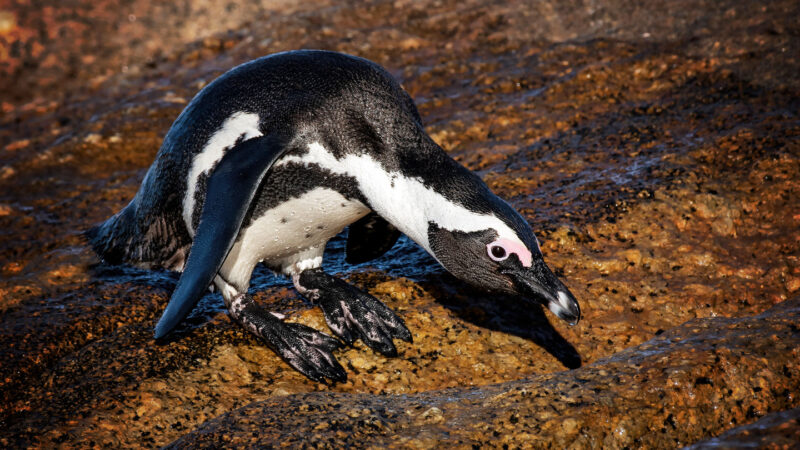Birds that dive underwater — such as penguins, loons and grebes — may be more likely to go extinct than their nondiving kin, a new study finds.
Many water birds have evolved highly specialized bodies and behaviors that facilitate diving. Now, an analysis of the evolutionary history of more than 700 water bird species shows that once a bird group gains the ability to dive, the change is irreversible. That inflexibility could help explain why diving birds have an elevated extinction rate compared with nondiving birds, researchers report in the Dec. 21 Proceedings of the Royal Society B.
Science News headlines, in your inbox
Headlines and summaries of the latest Science News articles, delivered to your email inbox every Thursday.
Thank you for signing up!
There was a problem signing you up.
“There are substantial morphological adaptations for diving,” says Catherine Sheard, an evolutionary biologist at the University of Bristol in England, who was not involved with the study. For instance, birds that plunge into the water from the air, such as gannets and some pelicans, may have tweaks to the neck muscles and the bones in the chest.
It’s possible that some diving birds are evolving under an evolutionary “ratchet,” where adaptations to exploit a certain food source or habitat unlock some new opportunities, but also encourage ever more specialized evolutionary tailoring. These birds may become trapped in their ways, increasing their risk of extinction. That’s especially true if their habitat rapidly changes in some negative way, possibly because of human-caused climate change (SN: 1/16/20).
Evolutionary biologists Josh Tyler and Jane Younger investigated the evolution of diving in Aequorlitornithes, a collection of 727 water bird species across 11 bird groups. The team divided species into either nondiving birds, or one of three diving types: foot-propelled pursuit (such as loons and grebes), wing-propelled pursuit (like penguins and auks) and the plunge divers.
Diving has evolved at least 14 separate times in the water birds, but there were no instances where diving birds reverted to a nondiving form, the researchers found.
The scientists also explored the link between diving and the development of new species, or their demise, in various bird lineages. Among 236 diving bird species, 75, or 32 percent, were part of lineages that are experiencing 0.02 more species extinctions per million years than the generation of new species. This elevated extinction rate was more common in the wing-propelled and foot-propelled pursuit divers compared with plunge divers. Bird lineages that don’t dive, on the other hand, generated 0.1 more new species per million years than the rate of species dying out.
“The more specialized you become, the more reliant you are on a particular diet, foraging strategy or environment,” says Tyler, of the University of Bath in England. “The range of environments available for foraging is much larger for the nondiving birds than for the specialist divers, and this may play into their ability to adapt and thrive.”
Within diving bird groups, the less specialized, the better. Take penguins, a group that has become the subject of a fair share of conservation concern (SN: 8/1/18). The researchers point out that gentoo penguins (Pygoscelis papua) — which have a broad diet — have larger population sizes than related chinstrap penguins (P. antarcticus) that eat mostly krill, and may actually be as many as four very recently diverged species.
Subscribe to Science News
Get great science journalism, from the most trusted source, delivered to your doorstep.
The International Union for the Conservation of Nature considers both penguin species to be of “least concern” in terms of imminent extinction risk. But chinstrap numbers are declining in some areas, while gentoo population numbers remain generally stable.
If some diving birds are being trapped in their environments by their own adaptations, that doesn’t bode well for their long-term survival, say Tyler and Younger, who is at the University of Tasmania in Hobart.
According to the IUCN, 156 species, or about one-fifth, of the 727 species of water birds are considered vulnerable, endangered or critically endangered. The researchers calculate that of the 75 diving bird species from lineages with heightened extinction rates, 24 species, or nearly one-third, are already listed as threatened.


